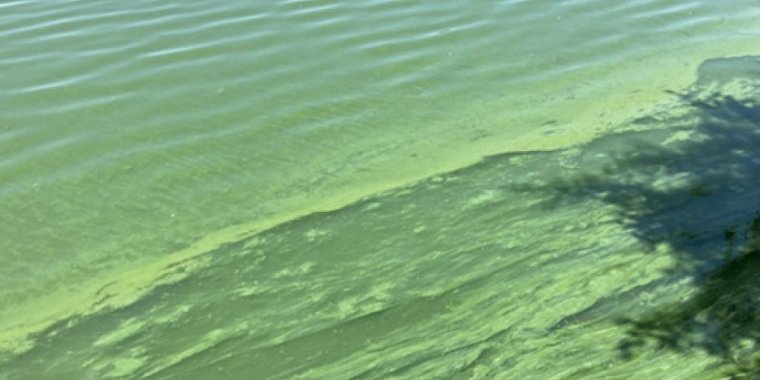| News / Science News |
Scientists improve ability to identify and study harmful algal blooms
Harmful algal blooms create challenges around the globe, including water quality and health risks for humans, wildlife and pets.

Microcystis bloom in Castle Rock Pond, Norman, Oklahoma. Photo: Haiyuan Cai
Now, researchers at the University of Oklahoma and other institutions are leading an effort to better manage Microcystis blooms and toxins through a new genome-based taxonomy.
Microcystis is a genus of freshwater cyanobacteria that includes the harmful algal bloom-forming species, Microcystis aeruginosa. Many members of a Microcystis community can produce neurotoxins and liver toxins.
Biologists Dave Hambright, Lee Krumholz and colleagues at the University of North Carolina, James Madison University and Auburn University worked on the project.
Through the development of a new genome-based taxonomy, the researchers will be able to characterize the ecological niches of Microcystis, including nutrient requirements and seasonality, and ultimately, control harmful Microcystis blooms.
The team has developed genetic markers that will allow researchers to identify the Microcystis species present in water systems. The researchers have identified 16 unique species, with as many as 30 or more likely, that are genetically distinct.
"This new genome-based taxonomy is the basis for researchers to formulate science-based management programs to rid our waters of harmful Microcystis blooms," said Hambright. "Our improved ability to identify and study species of this algae will aid our ability to reduce health risks, as well as manage and protect our increasingly vulnerable water resources."
Understanding Microcystis ecology and evolution is critical for lake and water quality management aimed at preventing and reducing harmful Microcystis blooms.
The group hypothesized that Microcystis and its microbiome were a coevolved community of complementary interacting bacteria species — each necessary for the success of the others.
The goal of the study was to examine the genetic makeup of Microcystis using 122 published genomes and make predictions of potential metabolic functions that might be provided by the microbiome bacteria. Their paper, the scientists said, lays the foundation for that goal. (U.S. National Science Foundation)
YOU MAY ALSO LIKE





